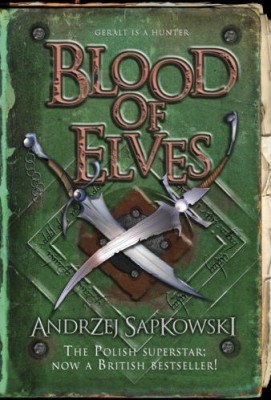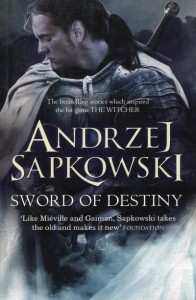When it comes to working on the Ancient Lands, probably the most difficult thing about it has always been the subject of places. Cultures, Creatures, and Cosmology have always been my greatest strengths and I am totally in love with what I have created over the last four years. But places have never really worked out and after all this time I still have no real map for the whole setting.
I think a major part of that comes from the Ancient Lands being in many ways the synthesis of two different kinds of fiction: Fantasy RPG settings and space opera videogames. I always had in mind a reincarnation of Knights of the Old Republic and Mass Effect in the form of a bronze age Sword & Sorcery world. A concept I still fully believe in. Mass Effect is born directly out of Star Wars (so they could continue their game series unbound by a license) and Star Wars is a direct descendant of the John Carter novels with a bunch of old Samurai movies thrown in. And John Carter really is the granddaddy of both Space Opera and Sword & Sorcery. They are two divergent branches from the same root and at their very heart they tick the same and follow the same logic.
The cognitive dissonance I am struggling with is how these two main sources deal with maps. Fantasy roleplaying games are obsessed with maps of very high detail, while space opera doesn’t have any. And it doesn’t need to. Everyone travels by space ship and using hyperdrive. When distance doesn’t matter, relative position is meaningless as well. Now you are here and next you are there. That’s all there is. Somewhat paradoxically, even with a whole galaxy as the environment, the setting always only extends as far as the eye can see. These universes are so mind bogglingly huge that trying to write down everything is impossible, so nobody tries. Fantasy RPGs are different. They very often opperate by the unspoken logic that you can indeed catalogue every single major settlement and prominent landmark of an entire continent on a single page. Which is of course preposterous, but nobody really thinks about it or questions it. When creating a fantasy world, the instinct is very powerful to start with a map. But in this particula case it completely doesn’t work. The most important Space Opera element I want to capture is the sensation of vast emptiness of space. Having a satellite view map of the setting directly contradicts that and cancels it out. I think I now realize that a traditional RPG map can not work for the Ancient Lands.
When you look at Star Wars and Mass Effect, “worlds” really just consist of space ports and landing sites. And perhaps a short footmarch away from those. For a while that was an approach I tried to work with. But the bronze age setting focused on tribal society is meant to deal primarily with the villages in the wild, with the big cities being more like fancyful stories that most people never get to see, so I soon abandoned that. Of course, how would you make a map based world the size of a continent that consists only of small and mostly generic villages? That also is completely doomed to fail, but I guess I never really thought about it until now.
It seems that a completely different approach is required to tackle this. One source I will be going back to for this are the two great sandbox settings by Kevin Crawford, Red Tide and . I think that seems like a very viable approach to what I have in mind. Maybe I’ll also give Stars Without Number another more careful look. It is clear that I can not create an encyclopedia of all major and interesting settlements. Instead I think I should rathe concentrate of creating a good but overseeable number of towns and villages that serve as examples of how these usually look in the Ancient Lands. Not just as templates for making campaign specific locations, but also as completely functional sites to be used for adventures. But I think the main focus should really be on describing both cultures and environments in sufficient detail to give a good sense of their identities and dynamics. Within reason, of course. Something like a 120 page book for each culture would be nonsense. But say perhaps three or four pages for each of the 20 cultures? Add to that a section on different types of wilderness environments, a good number of full page settlements, and a bit about technologies and magic and you got a good size setting book that is both complete and not overwhelming. Some kind of map is of course still needed, but it can be a really crude one that only shows major land masses, main ports, and the largest mountain ranges. Like actual ancient and medieval maps did. Sadly I don’t remembe where, but a while ago I read a good post complaining about the wrong assumptions that are being evoked by most fantasy maps and how they put players and GM in the wrong frame of mind, assuming a world of extensive and complete geographic surveying. This might be a great opportunity to try out some different, more “oldschool” types of maps and seeing how they affect the experience.
 Right from the start it is made clear that this story is revolving around Ciri, a girl whose story began in The Last Wish and who first appeared in person in The Sword of Destiny. The one who is going to be Geralt’s Destiny, even though nobody knows what this is going to mean. But the circumstances of her childhood and previous encounters with Geralt are too strange for anyone to dismiss as coincidence. War is brewing in the Northern Kingdoms. The mighty empire of Nilfgaard has already conquered all the lands in the south and already devastated and occupied Cintra and nobody believes that they are going to stop. To make matters worse, the Nilfgaardians have open support within the Northern Kingdoms in the form of the Scoia’tael, radical young elves and dwarves who are hoping for autonomy as provinces of the empire instead of opression under the feudal lords and kings. Maybe they are impatient or under direct order of the emperor, but many have already begun striking at the human lords and their subjects wherever they can, causing chaos and destruction and forcing others of their kind to pick a side. All nonhumans become suspect and the situation in the towns is only going to get worse for them. In these dark times Ciri is having regular terrifying visions she can neither make any sense of nor remember, and out of ideas the witchers turn to their friends among the sorceresses for help. Meanwhile a mysterious assassin appears in the Northern Kingdoms, looking for both Ciri and Geralt.
Right from the start it is made clear that this story is revolving around Ciri, a girl whose story began in The Last Wish and who first appeared in person in The Sword of Destiny. The one who is going to be Geralt’s Destiny, even though nobody knows what this is going to mean. But the circumstances of her childhood and previous encounters with Geralt are too strange for anyone to dismiss as coincidence. War is brewing in the Northern Kingdoms. The mighty empire of Nilfgaard has already conquered all the lands in the south and already devastated and occupied Cintra and nobody believes that they are going to stop. To make matters worse, the Nilfgaardians have open support within the Northern Kingdoms in the form of the Scoia’tael, radical young elves and dwarves who are hoping for autonomy as provinces of the empire instead of opression under the feudal lords and kings. Maybe they are impatient or under direct order of the emperor, but many have already begun striking at the human lords and their subjects wherever they can, causing chaos and destruction and forcing others of their kind to pick a side. All nonhumans become suspect and the situation in the towns is only going to get worse for them. In these dark times Ciri is having regular terrifying visions she can neither make any sense of nor remember, and out of ideas the witchers turn to their friends among the sorceresses for help. Meanwhile a mysterious assassin appears in the Northern Kingdoms, looking for both Ciri and Geralt.
